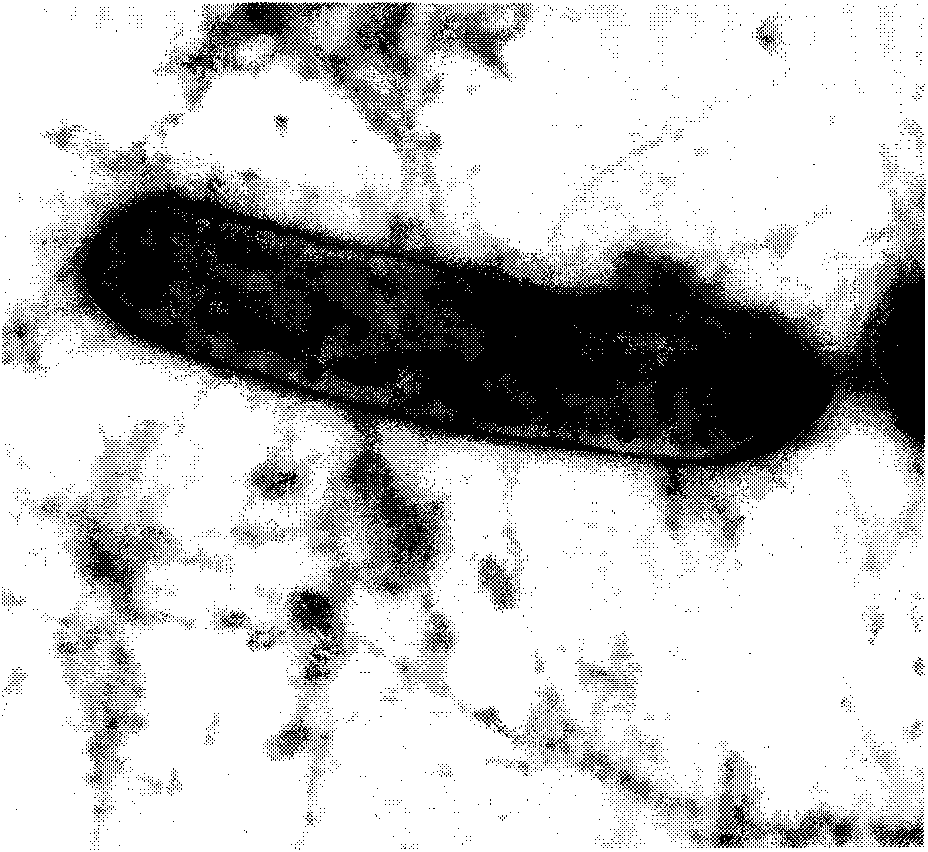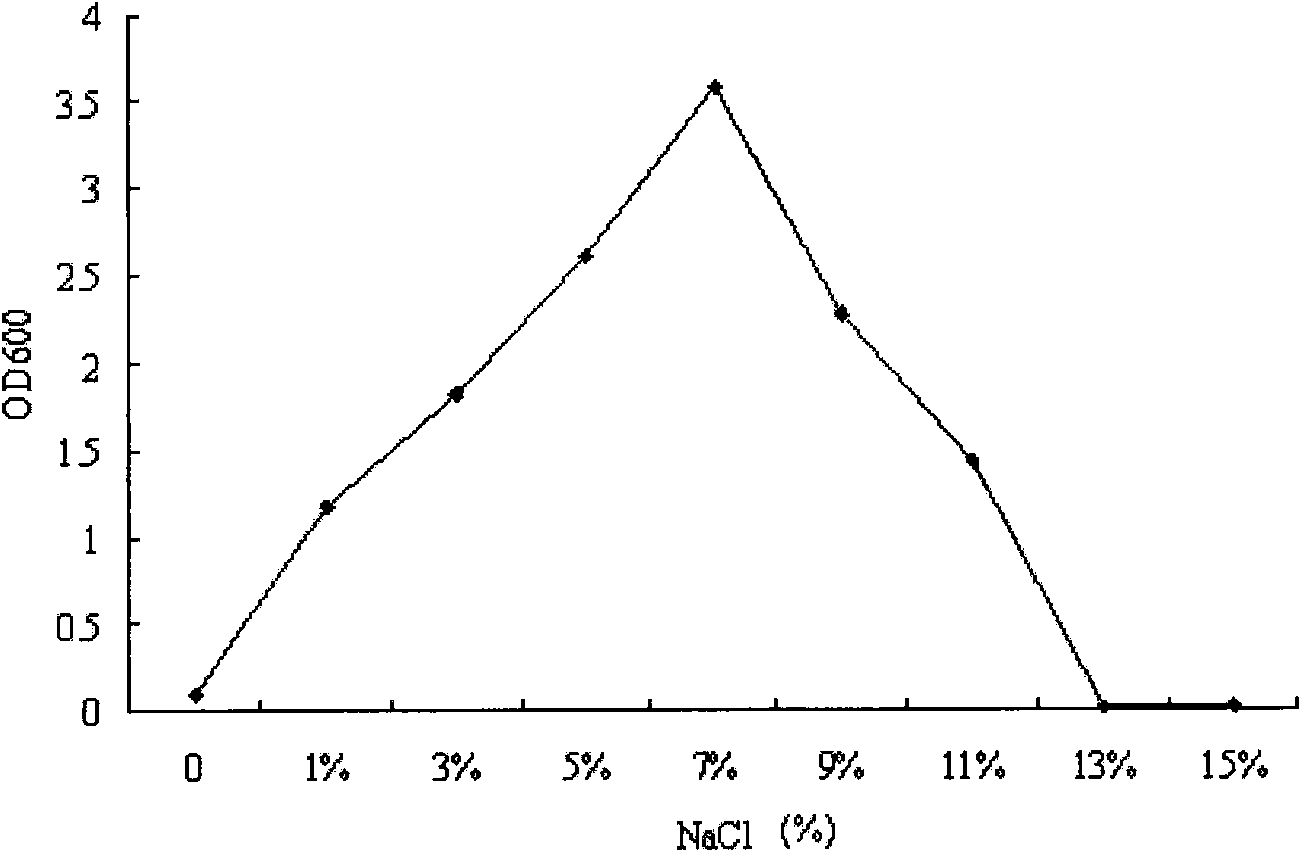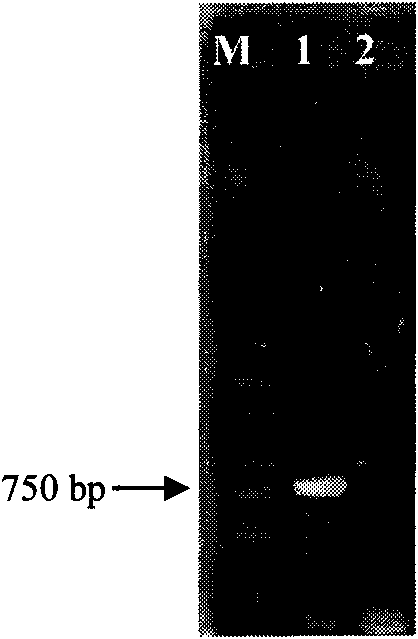Bacillus alcalophilus as well as culture method and application
A technology of alkalophilic bacillus and its cultivation method, which is applied in the field of alkalophilic bacillus SD7903 and its cultivation, can solve the problem of low ectoine production, achieve high ectoine synthesis capacity, broaden the utilization space of biological resources, The effect of ensuring ecological security
- Summary
- Abstract
- Description
- Claims
- Application Information
AI Technical Summary
Problems solved by technology
Method used
Image
Examples
Embodiment 1
[0039] Example 1: Obtaining Bacillus alcalophilus SD7903
[0040] The strain was isolated from the saline-alkali soil in the Caragana korshinskii planting area in Wuzhai County, Shanxi. 1g of the above soil sample was serially diluted with sterile water to a concentration of 10×, 100×, and 1000×. The LB solid medium was cultured at 33°C for 5 days, and then a single colony was picked, and streaking was repeated until pure bacteria were obtained. The bacteria of the present invention were selected from 100× diluted soil samples. This is the first screening, that is, the screening medium is used to screen salt-tolerant bacteria.
[0041] For the second time, the PCR method was used to re-screen the salt-tolerant bacteria that can produce tetrahydropyrimidine. The CTAB method was used to extract the genomic DNA of the salt-tolerant strains that were initially screened. Using it as a template, specific primers ect1198 and ect1966 were designed to amplify about 750bp The tetrahydropyri...
Embodiment 2
[0058] Example 2 Amplification, sequencing and sequence alignment of 16S rDNA of Bacillus al calophilus SD7903
[0059] The genomic DNA of strain SD7903 was extracted by CTAB method as a template, and the primer sequence is as follows:
[0060] 27F 5’-GAGAGTTTGATCCTGGCTCAG-3’ (SEQIDN O.4)
[0061] 1495R 5’-CTACGGCTACCTTGTTACGA-3’ (SEQIDN O.5)
[0062] A fragment of approximately 1.4 kb was amplified according to the following amplification system.
[0063] The PCR reaction components are:
[0064] 10×PCR buffer 5μl
[0065] dNTP (2.5mM each) 5μl
[0066] Primer 27F (10μM) 2μl
[0067] Primer 1495R (10μM) 2μl
[0068] gDNA (0.1μg) 1μl
[0069] PfuTaq(5U / μl) 0.5μl
[0070] ddH 2 O 34.5μl
[0071]
[0072] Total volume 50μl
[0073] PCR reaction program: 95°C for 5min; 95°C for 40s, 52°C for 40s, 72°C for 1min, total 30 cycles; 72°C for 10min extension. The PCR product was recovered and purified by 1% agarose gel electrophoresis and then ligat...
Embodiment 3
[0075] Example 3 Resistance detection of Bacillus alcalophilus SD7903
[0076] The bacteria were respectively inoculated into common LB solid medium containing 50mg / L of ampicillin, kanamycin sulfate, chloramphenicol, tetracycline and rifampicin antibiotics, cultured in a 33℃ incubator for 5 days, and observed Whether the bacteria are growing on the medium. The results showed that the bacterium had no resistance to ampicillin, kanamycin sulfate, chloramphenicol, tetracycline and rifampicin on average, and would not transmit these drug-resistant factors to the environment during actual use, ensuring ecological safety.
PUM
 Login to View More
Login to View More Abstract
Description
Claims
Application Information
 Login to View More
Login to View More - R&D
- Intellectual Property
- Life Sciences
- Materials
- Tech Scout
- Unparalleled Data Quality
- Higher Quality Content
- 60% Fewer Hallucinations
Browse by: Latest US Patents, China's latest patents, Technical Efficacy Thesaurus, Application Domain, Technology Topic, Popular Technical Reports.
© 2025 PatSnap. All rights reserved.Legal|Privacy policy|Modern Slavery Act Transparency Statement|Sitemap|About US| Contact US: help@patsnap.com



